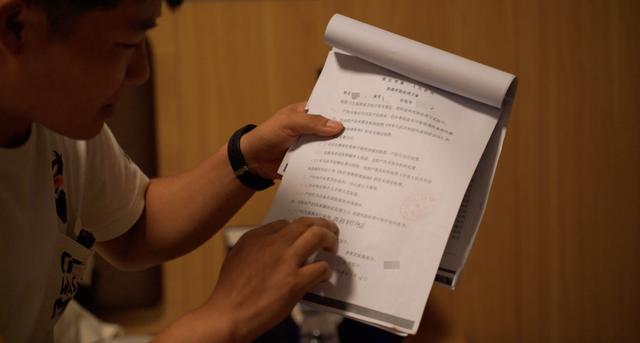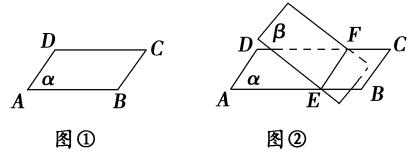
- 采用单钥密码系统的加密方法,同一个密钥可以同时用作信息的加密和解密,这种加密方法称为对称加密,也称为单密钥加密。
- 示例我们现在有一个原文3要发送给B设置密钥为108, 3 * 108 = 324, 将324作为密文发送给BB拿到密文324后, 使用324/108 = 3 得到原文
- 常见加密算法des : Data Encryption Standard,即数据加密标准,是一种使用密钥加密的块算法,1977年被美国联邦政府的国家标准局确定为联邦资料处理标准(FIPS),并授权在非密级政府通信中使用,随后该算法在国际上广泛流传开来。AES : Advanced Encryption Standard, 高级加密标准 .在密码学中又称Rijndael加密法,是美国联邦政府采用的一种区块加密标准。这个标准用来替代原先的DES,已经被多方分析且广为全世界所使用。
- 特点加密速度快, 可以加密大文件密文可逆, 一旦密钥文件泄漏, 就会导致数据暴露加密后编码表找不到对应字符, 出现乱码一般结合Base64使用
示例代码 des加密算法
Cipher :文档 https://docs.oracle.com/javase/8/docs/api/javax/crypto/Cipher.html#getInstance-java.lang.String-
package com.xxx.desaes;
import javax.crypto.Cipher;
import javax.crypto.spec.SecretKeySpec;
/**
* DesAesDemo
* @Description:
*/
public class DesAesDemo {
public static void main(String[] args) throws Exception{
// 原文
String input = "硅谷";
// des加密必须是8位
String key = "123456";
// 算法
String algorithm = "DES";
String transformation = "DES";
// Cipher:密码,获取加密对象
// transformation:参数表示使用什么类型加密
Cipher cipher = Cipher.getInstance(transformation);
// 指定秘钥规则
// 第一个参数表示:密钥,key的字节数组
// 第二个参数表示:算法
SecretKeySpec sks = new SecretKeySpec(key.getbytes(), algorithm);
// 对加密进行初始化
// 第一个参数:表示模式,有加密模式和解密模式
// 第二个参数:表示秘钥规则
cipher.init(Cipher.ENCRYPT_MODE,sks);
// 进行加密
byte[] bytes = cipher.doFinal(input.getBytes());
// 打印字节,因为ascii码有负数,解析不出来,所以乱码
// for (byte b : bytes) {
// System.out.println(b);
// }
// 打印密文
System.out.println(new String(bytes));
}
}
运行:

修改 密钥 key = “12345678” ,再次运行 ,出现乱码是因为对应的字节出现负数,但负数,没有出现在 ascii 码表里面,所以出现乱码,需要配合base64进行转码

使用 base64 进行编码
base64 导包的时候,需要注意 ,别导错了,需要导入 apache 包

运行程序

使用 ctrl alt m 快捷键抽取代码
package com.xxx.desaes;
import com.sun.org.apache.xml.internal.security.utils.Base64;
import javax.crypto.Cipher;
import javax.crypto.spec.IvParameterSpec;
import javax.crypto.spec.SecretKeySpec;
public class DesDemo {
// DES加密算法,key的大小必须是8个字节
public static void main(String[] args) throws Exception {
String input ="硅谷";
// DES加密算法,key的大小必须是8个字节
String key = "12345678";
String transformation = "DES"; // 9PQXVUIhaaQ=
// 指定获取密钥的算法
String algorithm = "DES";
String encryptDES = encryptDES(input, key, transformation, algorithm);
System.out.println("加密:" encryptDES);
String s = decryptDES(encryptDES, key, transformation, algorithm);
System.out.println("解密:" s);
}
/**
* 使用DES加密数据
*
* @param input : 原文
* @param key : 密钥(DES,密钥的长度必须是8个字节)
* @param transformation : 获取Cipher对象的算法
* @param algorithm : 获取密钥的算法
* @return : 密文
* @throws Exception
*/
private static String encryptDES(String input, String key, String transformation, String algorithm) throws Exception {
// 获取加密对象
Cipher cipher = Cipher.getInstance(transformation);
// 创建加密规则
// 第一个参数key的字节
// 第二个参数表示加密算法
SecretKeySpec sks = new SecretKeySpec(key.getBytes(), algorithm);
// ENCRYPT_MODE:加密模式
// DECRYPT_MODE: 解密模式
// 初始化加密模式和算法
cipher.init(Cipher.ENCRYPT_MODE,sks);
// 加密
byte[] bytes = cipher.doFinal(input.getBytes());
// 输出加密后的数据
String encode = Base64.encode(bytes);
return encode;
}
/**
* 使用DES解密
*
* @param input : 密文
* @param key : 密钥
* @param transformation : 获取Cipher对象的算法
* @param algorithm : 获取密钥的算法
* @throws Exception
* @return: 原文
*/
private static String decryptDES(String input, String key, String transformation, String algorithm) throws Exception {
// 1,获取Cipher对象
Cipher cipher = Cipher.getInstance(transformation);
// 指定密钥规则
SecretKeySpec sks = new SecretKeySpec(key.getBytes(), algorithm);
cipher.init(Cipher.DECRYPT_MODE, sks);
// 3. 解密,上面使用的base64编码,下面直接用密文
byte[] bytes = cipher.doFinal(Base64.decode(input));
// 因为是明文,所以直接返回
return new String(bytes);
}
}
运行程序:

Base64 算法简介
Base64是网络上最常见的用于传输8Bit字节码的可读性编码算法之一 可读性编码算法不是为了保护数据的安全性,而是为了可读性 可读性编码不改变信息内容,只改变信息内容的表现形式 所谓Base64,即是说在编码过程中使用了64种字符:大写A到Z、小写a到z、数字0到9、“ ”和“/” Base58是Bitcoin(比特币)中使用的一种编码方式,主要用于产生Bitcoin的钱包地址 相比Base64,Base58不使用数字"0",字母大写"O",字母大写"I",和字母小写"i",以及" "和"/"符号Base64 算法原理
base64 是 3个字节为一组,一个字节 8位,一共 就是24位 ,然后,把3个字节转成4组,每组6位,
3 * 8 = 4 * 6 = 24 ,每组6位,缺少的2位,会在高位进行补0 ,这样做的好处在于 ,base取的是后面6位,去掉高2位 ,那么base64的取值就可以控制在0-63位了,所以就叫base64,111 111 = 32 16 8 4 2 1 =
base64 构成原则
① 小写 a - z = 26个字母
② 大写 A - Z = 26个字母
③ 数字 0 - 9 = 10 个数字
④ / = 2个符号
大家可能发现一个问题,咱们的base64有个 = 号,但是在映射表里面没有发现 = 号 , 这个地方需要注意,等号非常特殊,因为base64是三个字节一组 ,如果当我们的位数不够的时候,会使用等号来补齐
1.2.4 base64补等号测试
package com.xxx; import com.sun.org.apache.xml.internal.security.utils.Base64; public class TestBase64 { public static void main(String[] args) { // 1:MQ== 表示一个字节,不够三个字节,所以需要后面通过 == 号补齐 System.out.println(Base64.encode("1".getBytes())); // System.out.println(Base64.encode("12".getBytes())); // System.out.println(Base64.encode("123".getBytes())); // // 硅谷:中文占6个字节,6 * 8 = 48 ,刚刚好被整除,所以没有等号 // System.out.println(Base64.encode("硅谷".getBytes())); } }运行:
1.2.5 AES加密解密
AES 加密解密和 DES 加密解密代码一样,只需要修改加密算法就行,拷贝 ESC 代码
package com.xxx.desaes; import com.sun.org.apache.xml.internal.security.utils.Base64; import javax.crypto.Cipher; import javax.crypto.spec.SecretKeySpec; public class AesDemo { // DES加密算法,key的大小必须是8个字节 public static void main(String[] args) throws Exception { String input ="硅谷"; // AES加密算法,比较高级,所以key的大小必须是16个字节 String key = "1234567812345678"; String transformation = "AES"; // 9PQXVUIhaaQ= // 指定获取密钥的算法 String algorithm = "AES"; // 先测试加密,然后在测试解密 String encryptDES = encryptDES(input, key, transformation, algorithm); System.out.println("加密:" encryptDES); String s = dncryptDES(encryptDES, key, transformation, algorithm); System.out.println("解密:" s); } /** * 使用DES加密数据 * * @param input : 原文 * @param key : 密钥(DES,密钥的长度必须是8个字节) * @param transformation : 获取Cipher对象的算法 * @param algorithm : 获取密钥的算法 * @return : 密文 * @throws Exception */ private static String encryptDES(String input, String key, String transformation, String algorithm) throws Exception { // 获取加密对象 Cipher cipher = Cipher.getInstance(transformation); // 创建加密规则 // 第一个参数key的字节 // 第二个参数表示加密算法 SecretKeySpec sks = new SecretKeySpec(key.getBytes(), algorithm); // ENCRYPT_MODE:加密模式 // DECRYPT_MODE: 解密模式 // 初始化加密模式和算法 cipher.init(Cipher.ENCRYPT_MODE,sks); // 加密 byte[] bytes = cipher.doFinal(input.getBytes()); // 输出加密后的数据 String encode = Base64.encode(bytes); return encode; } /** * 使用DES解密 * * @param input : 密文 * @param key : 密钥 * @param transformation : 获取Cipher对象的算法 * @param algorithm : 获取密钥的算法 * @throws Exception * @return: 原文 */ private static String dncryptDES(String input, String key, String transformation, String algorithm) throws Exception { // 1,获取Cipher对象 Cipher cipher = Cipher.getInstance(transformation); // 指定密钥规则 SecretKeySpec sks = new SecretKeySpec(key.getBytes(), algorithm); cipher.init(Cipher.DECRYPT_MODE, sks); // 3. 解密 byte[] bytes = cipher.doFinal(Base64.decode(input)); return new String(bytes); } }运行程序:AES 加密的密钥key , 需要传入16个字节
在运行程序
1.2.6 toString()与new String ()用法区别
举例子
package com.xxx; import com.sun.org.apache.xerces.internal.impl.dv.util.Base64; public class TestBase64 { public static void main(String[] args) { String str="TU0jV0xBTiNVYys5bEdiUjZlNU45aHJ0bTdDQStBPT0jNjQ2NDY1Njk4IzM5OTkwMDAwMzAwMA=="; String rlt1=new String(Base64.decode(str)); String rlt2=Base64.decode(str).toString(); System.out.println(rlt1); System.out.println(rlt2); } }结果是:
MM#WLAN#Uc 9lGbR6e5N9hrtm7CA A==#646465698#399900003000 [B@1540e19d哪一个是正确的?为什么?
这里应该用new String()的方法,因为Base64加解密是一种转换编码格式的原理
toString()与new String ()用法区别
str.toString是调用了这个object对象的类的toString方法。一般是返回这么一个String:[class name]@[hashCode]
new String(str)是根据parameter是一个字节数组,使用java虚拟机默认的编码格式,将这个字节数组decode为对应的字符。若虚拟机默认的编码格式是ISO-8859-1,按照ascii编码表即可得到字节对应的字符。
什么时候用什么方法呢?
new String()一般使用字符转码的时候,byte[]数组的时候
toString()对象打印的时候使用
,









